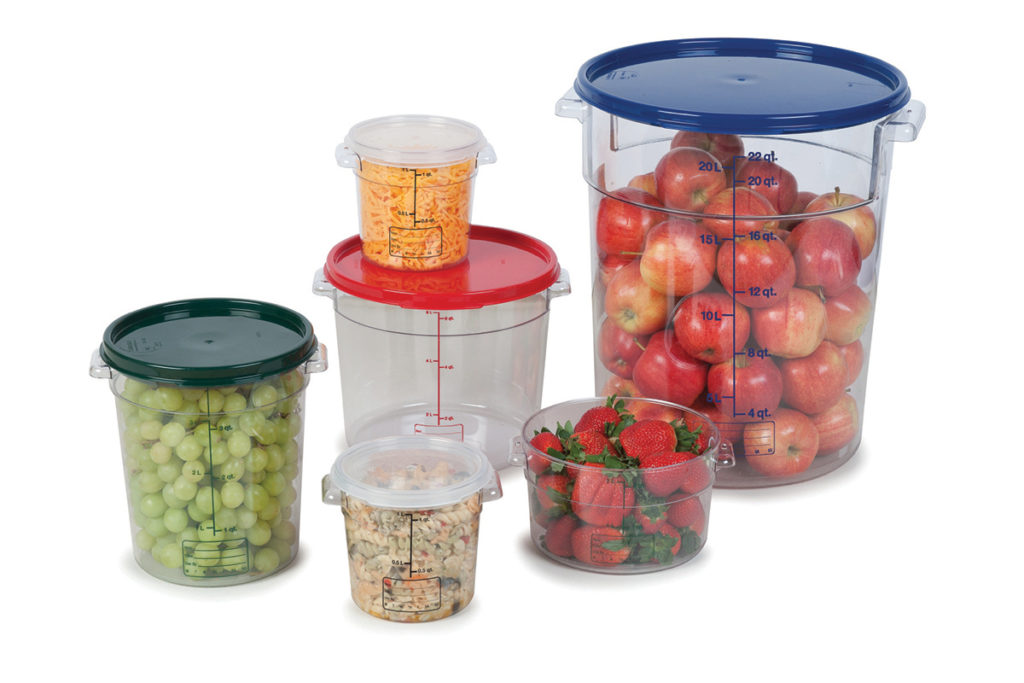
FOUR FOULS OF OVERPRODUCTION
Famed business management theorist Peter Drucker said, “If you can’t measure it, you can’t improve it.” The maxim certainly applies to reducing the food you waste while producing your menus every day. According to food waste reduction experts LeanPath, Portland, Ore., regularly preparing and cooking more than you sell doesn’t just waste the food and the profits you’d make from selling it. It also wastes utilities, labor and disposal costs.
1. Food: Say you throw out half a pan of rosemary chicken every 3 or 4 days. You’re not just wasting the chicken, but all of the ingredients that went into the dish, including the lemon, garlic, butter and rosemary.
2. Energy & Water: Every dish you prepare consumes gas, electric and water.
3. Labor: You pay your kitchen crew to prep and cook the dish—the dish that’s getting tossed into the trash.
4. Disposal: There’s a cost to haul away your wasted foods. The more waste you accumulate in your bins, the more frequently you’re paying trash hauler’s tipping fees.
Awareness of what’s going into the trash is the first step to realizing you’re overproducing on a regular basis. It adds up. In fact, 7 million lb. of food is overproduced (and tossed) each year. Leading culprits: Vegetables, soup, potatoes, rice and cereal.
SAY WHEN!
In a survey conducted years back by the NPD Group along with researchers at Clemson and Pennsylvania State University, 300 restaurant chefs were surveyed to determine whether they are aware of the larger portion sizes and calories they were serving to customers.
Major survey findings:
● Food portion sizes are 2-3 times larger at restaurants.
● Restaurants believe consumers want lots of food on their plate.
● Meals served at restaurants have at least 60% more calories.
● Portion sizes have steadily grown since the 1970s.
● Restaurants expect people to eat most or all of the food served.
● More than three-fourths of the chefs think their portions are “regular”.
● Less than one-fifth of them think portions are bigger.
● 58% believe people should eat until they are full and no more.
In the same survey, chefs said these factors have a strong influence on determining portion sizes at restaurants:
► Presentation of the food: 70%
► Food costs: 65%
► Customer expectations: 52%
► Size of plate: 43%
► Plate waste (what is left uneaten): 30%
► Competition with other restaurants: 25%
► Calorie content: 16%
A CLEAR CASE FOR CLEAR CASES
How much food spoils on the shelves in your cold storage? Can you even see what you’ve got stored?
Cardboard boxes are tempting. They already hold your ingredients, they’ve got labels and the “lot” information stamped on the side. They line up on a shelf nicely. Why not just leave food in the cartons they came in?
Well, silverfish and cockroaches for one; dirt, oil and other soil for two; leaking liquids for three—the list goes on. Do you really want those boxes sitting in your walk-in? Are they really accessible, or do they rip and fall apart when you grab them? Do you want employees to have to look in every box to figure out your inventory? How many get shoved to the back?
Carlisle StorPlus offers a complete lineup of storage and handling solutions. Food pans, squares, rounds and storage boxes are available in all the popular sizes. The complete storage solution includes snap-on or EZ-Access hinged lids and color-coded options. Tight seals help maintain freshness, and date indicators help manage and organize inventory and avoid food waste.
PERSPECTIVE ON PORTIONS
“How much food is served is not a matter of wanting to comfort the customer with a big portion but rather how much profit can be made when balancing the portion size against the cost of food, overhead, labor and the perception of the customers that they are getting ‘what they paid for.’”—Judith J. Wurtman, PhD, HuffPost
It’s not about cooking less. It’s about cooking the right amount that your customers can eat and that they will consider a decent value for the price you need to charge. Today, that often means they take leftovers home, but not always. Consider trimming portions after gathering the following kind of information and trying these tips:
● Watch which dishes come back regularly with food on the plate.
● Train servers to take note of dishes that regularly require boxes at the meal end.
● On the menu, offer half portions but at more than half the price. If you sell two, you’ll make more than a full portion would sell for.
● While chefs believe diners would notice a 25% reduction in portion size, most doubt anyone would notice a 10% to 15% reduction—again, it adds up.
● Most adults eat around 1½ pounds of food in a meal. You may be preparing more food than your customers are going to eat. To avoid this, consider cooking in smaller batches and preparing less overall. Or continue to make more ahead of time and safely store for later use. It’s so easy to stop eyeballing and start portioning by using portion control tools on the cookline.
Want more tips for fighting food waste? Download Carlisle FoodService Products Food Waste Reduction Magazine at www.carlislefsp.com/fer/food-waste.
Sponsored Content
RELATED CONTENT
- Advertisement -
- Advertisement -
- Advertisement -
TRENDING NOW
- Advertisement -
- Advertisement -
- Advertisement -


